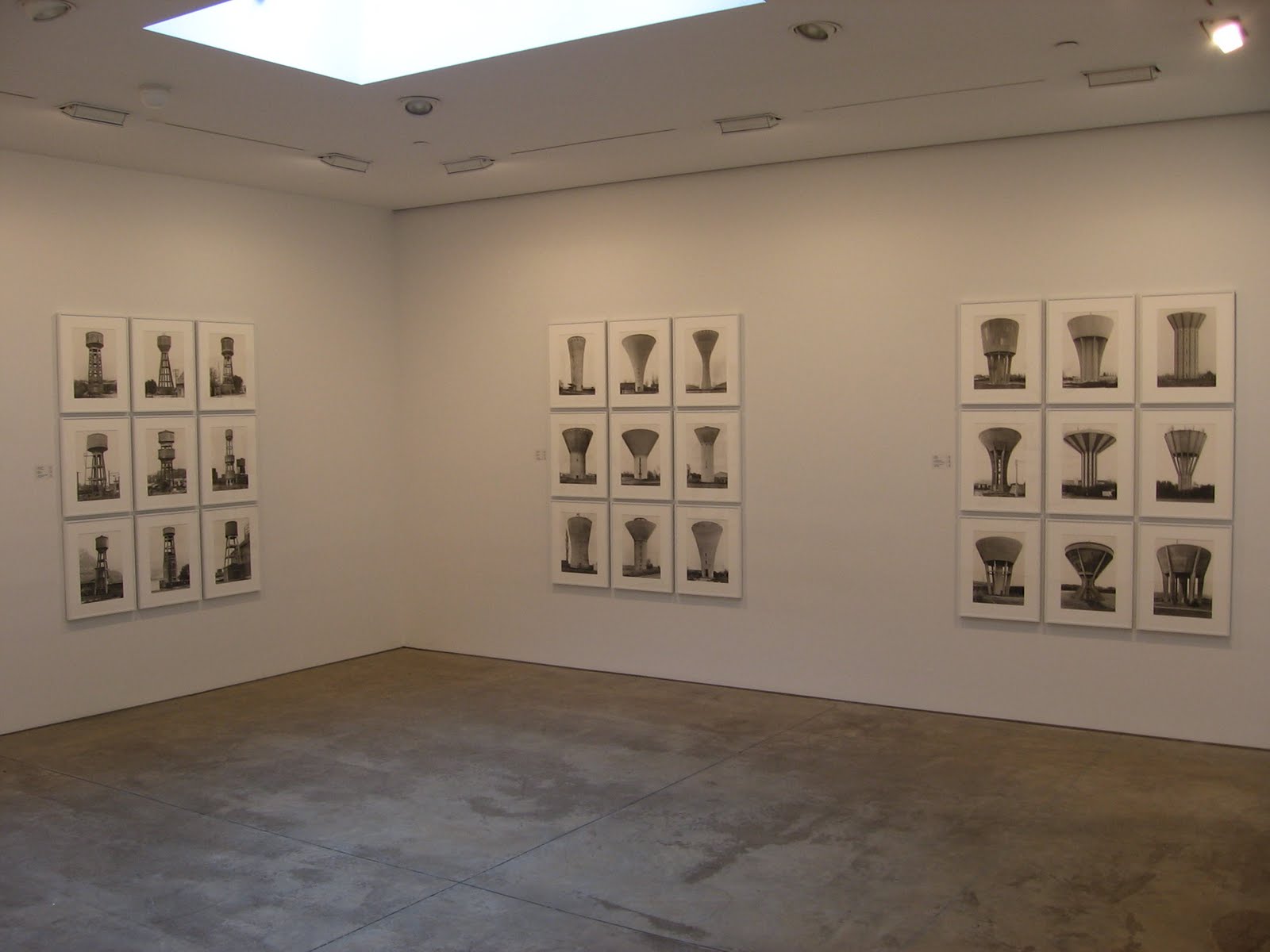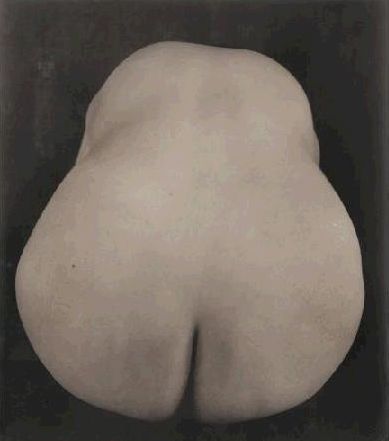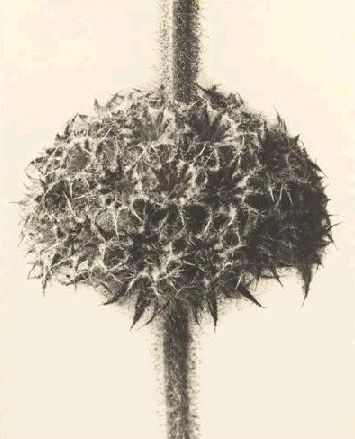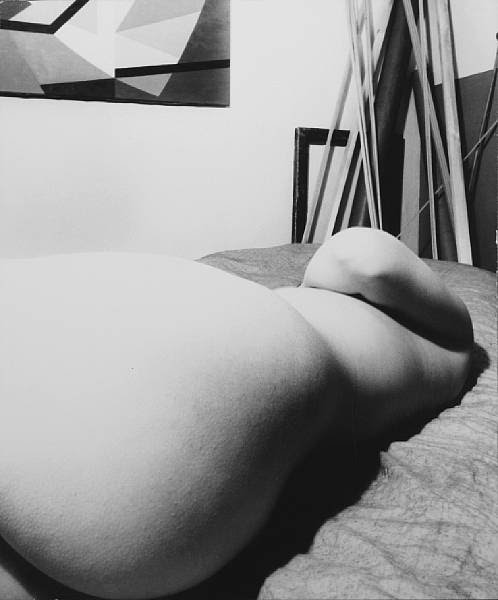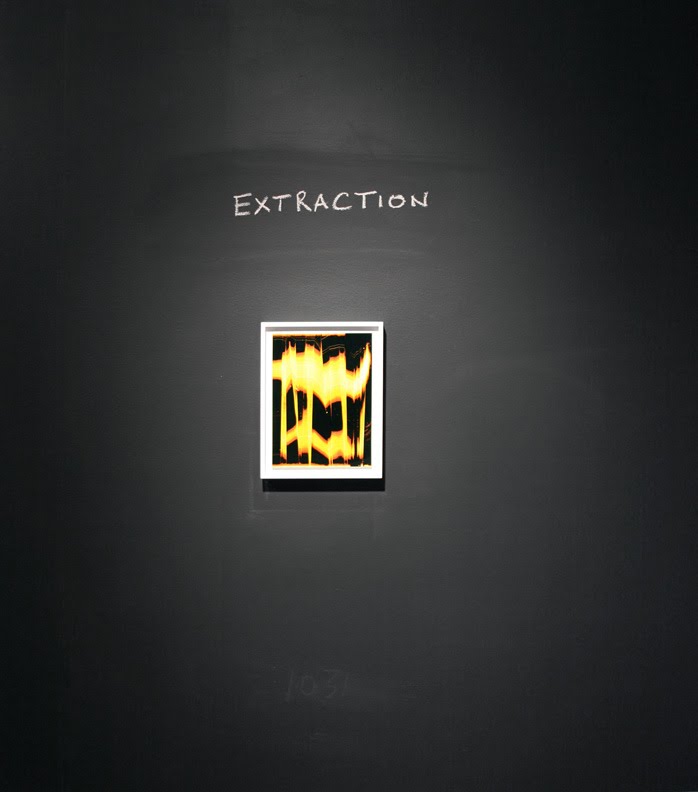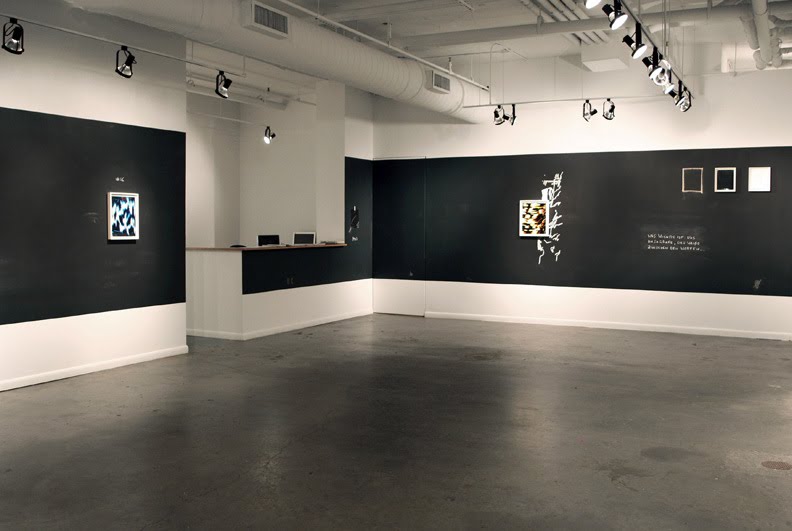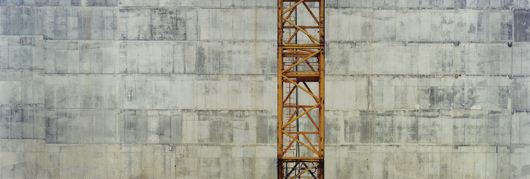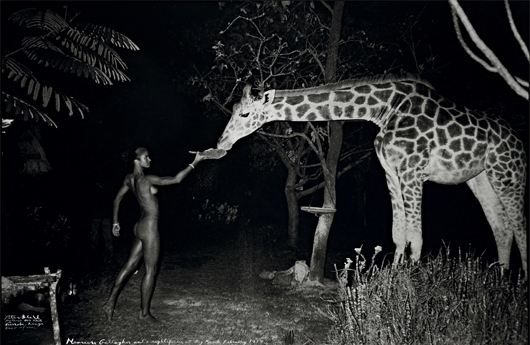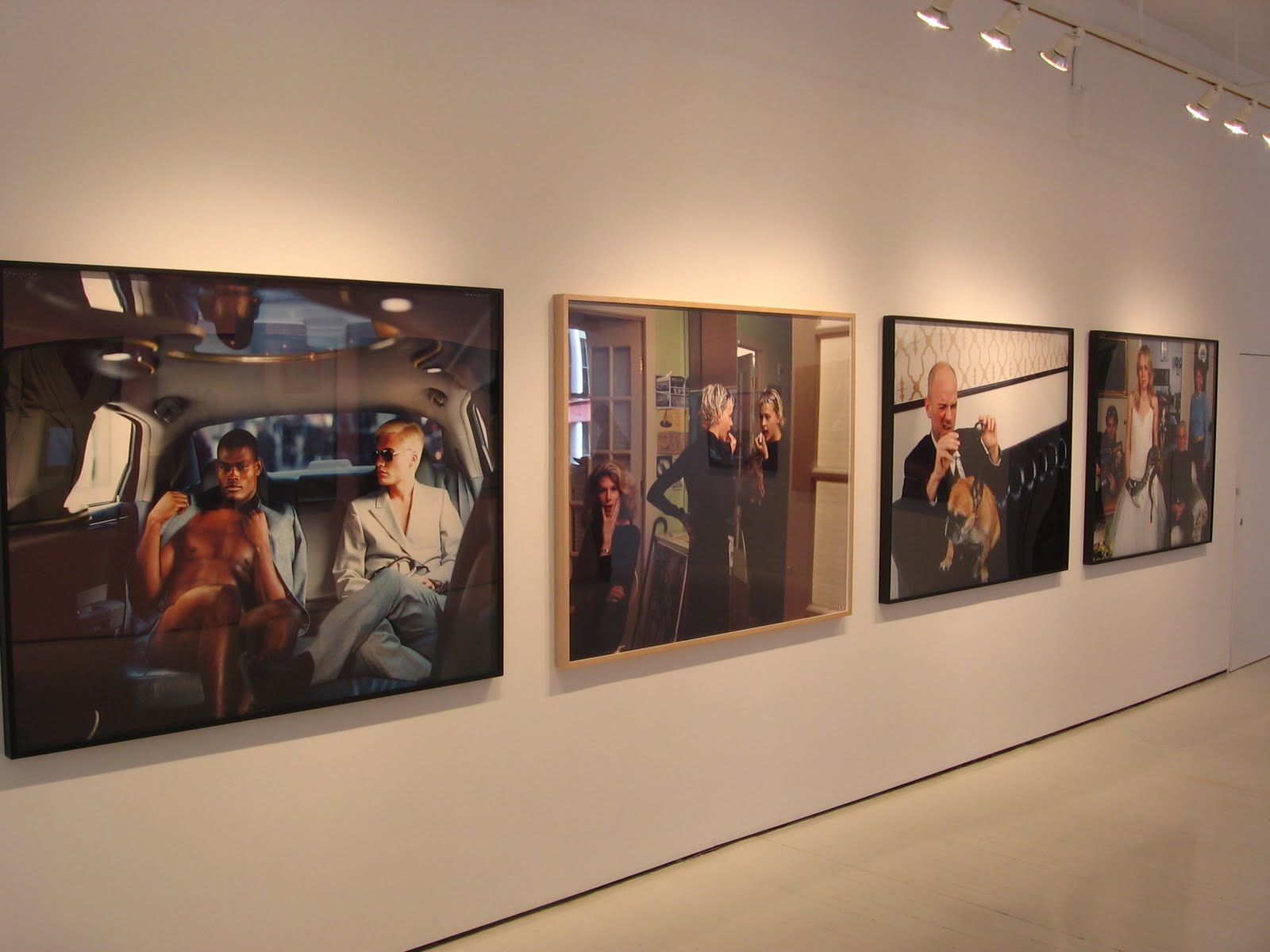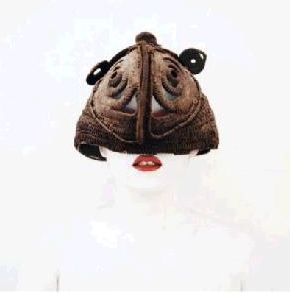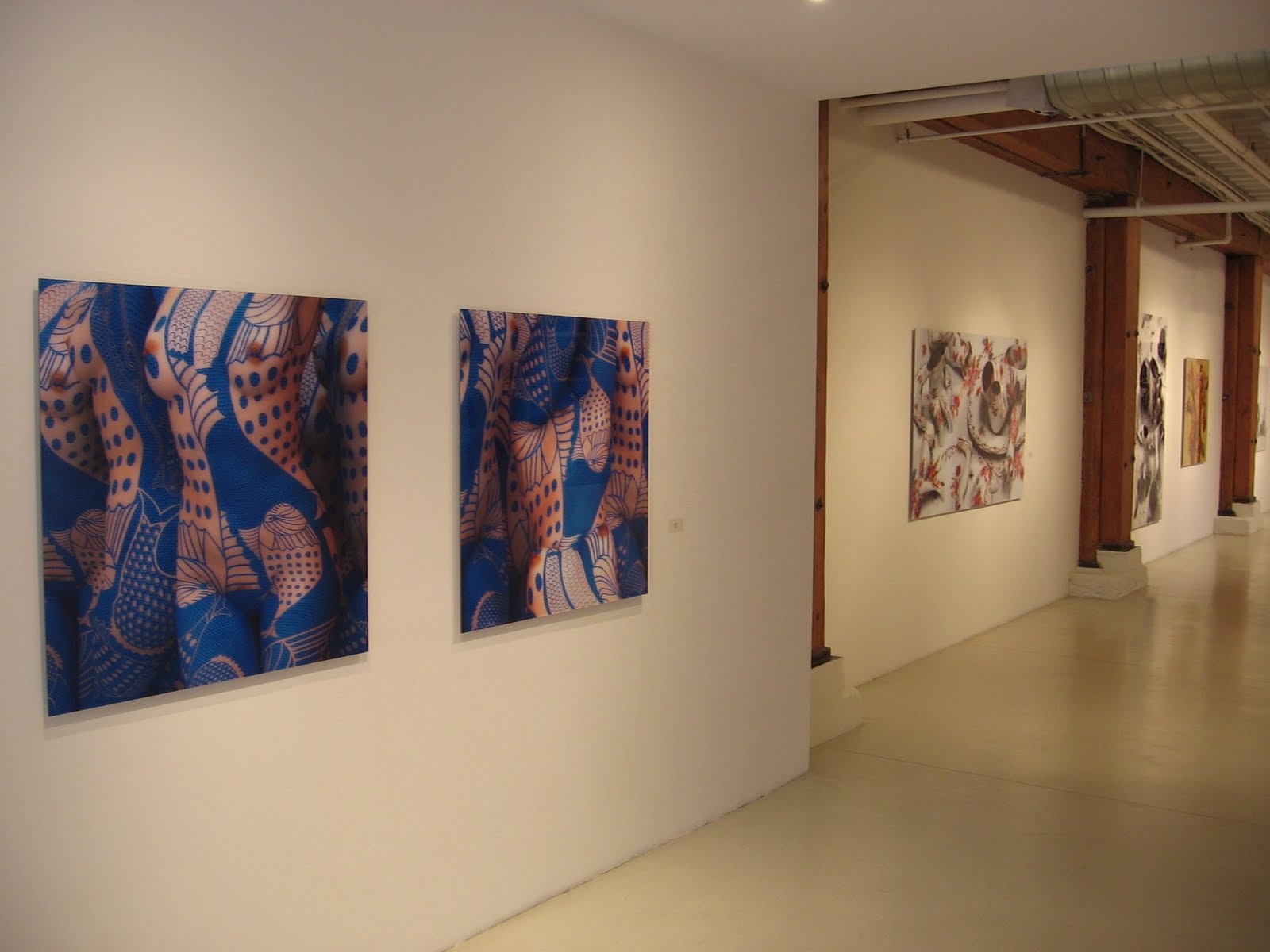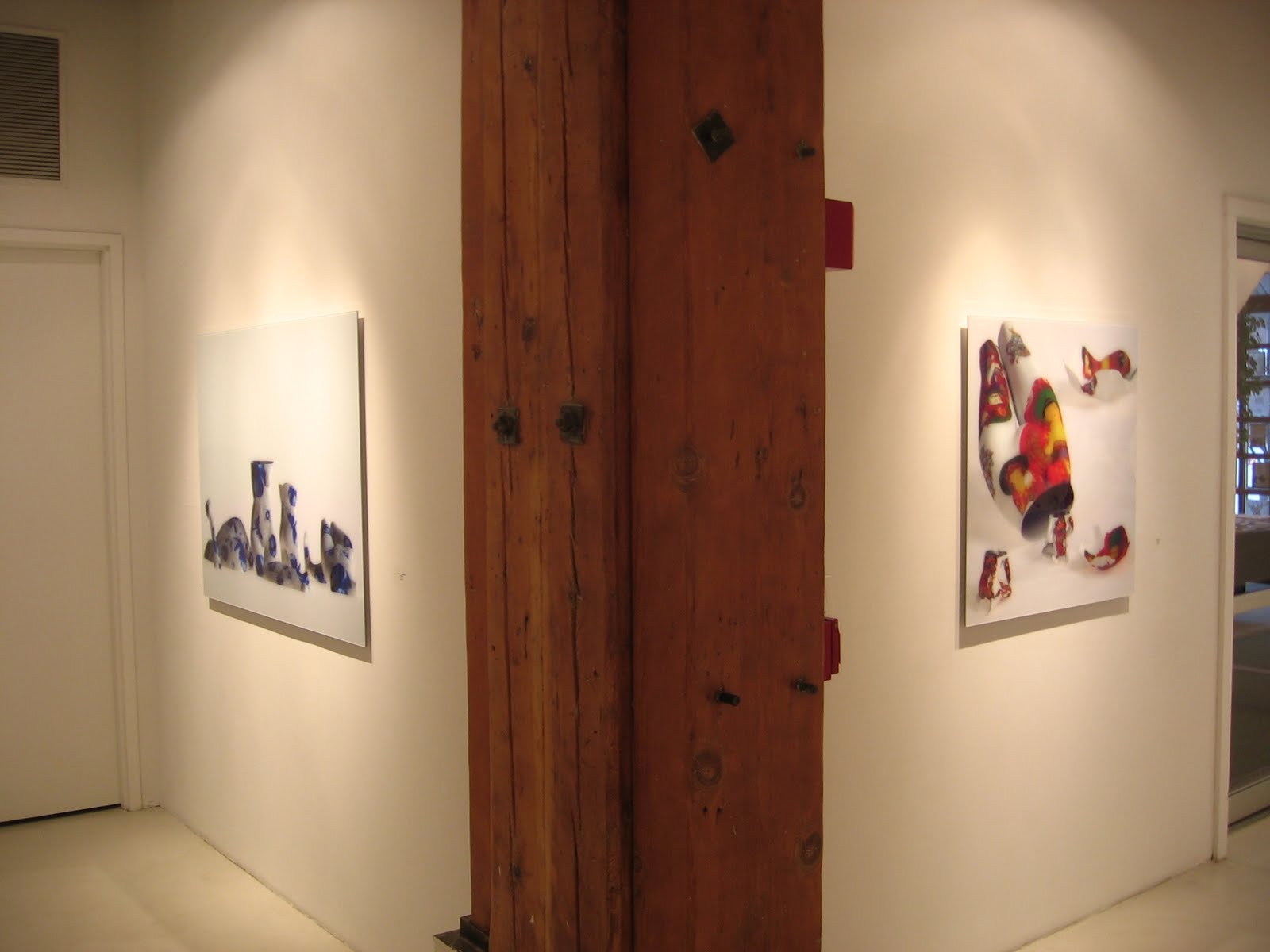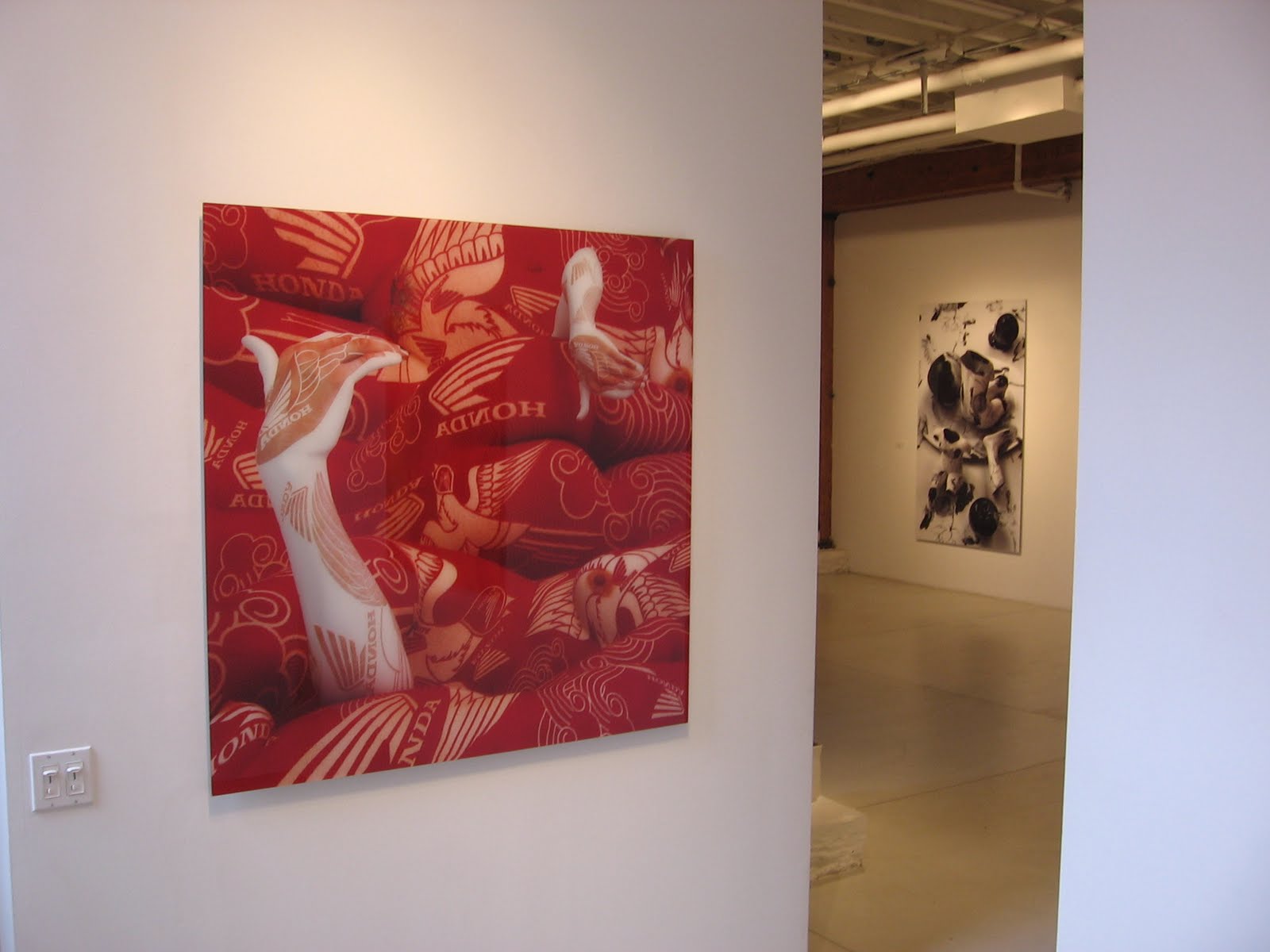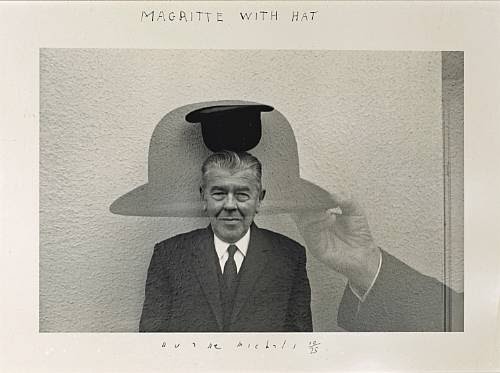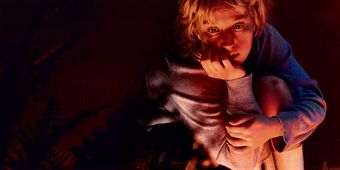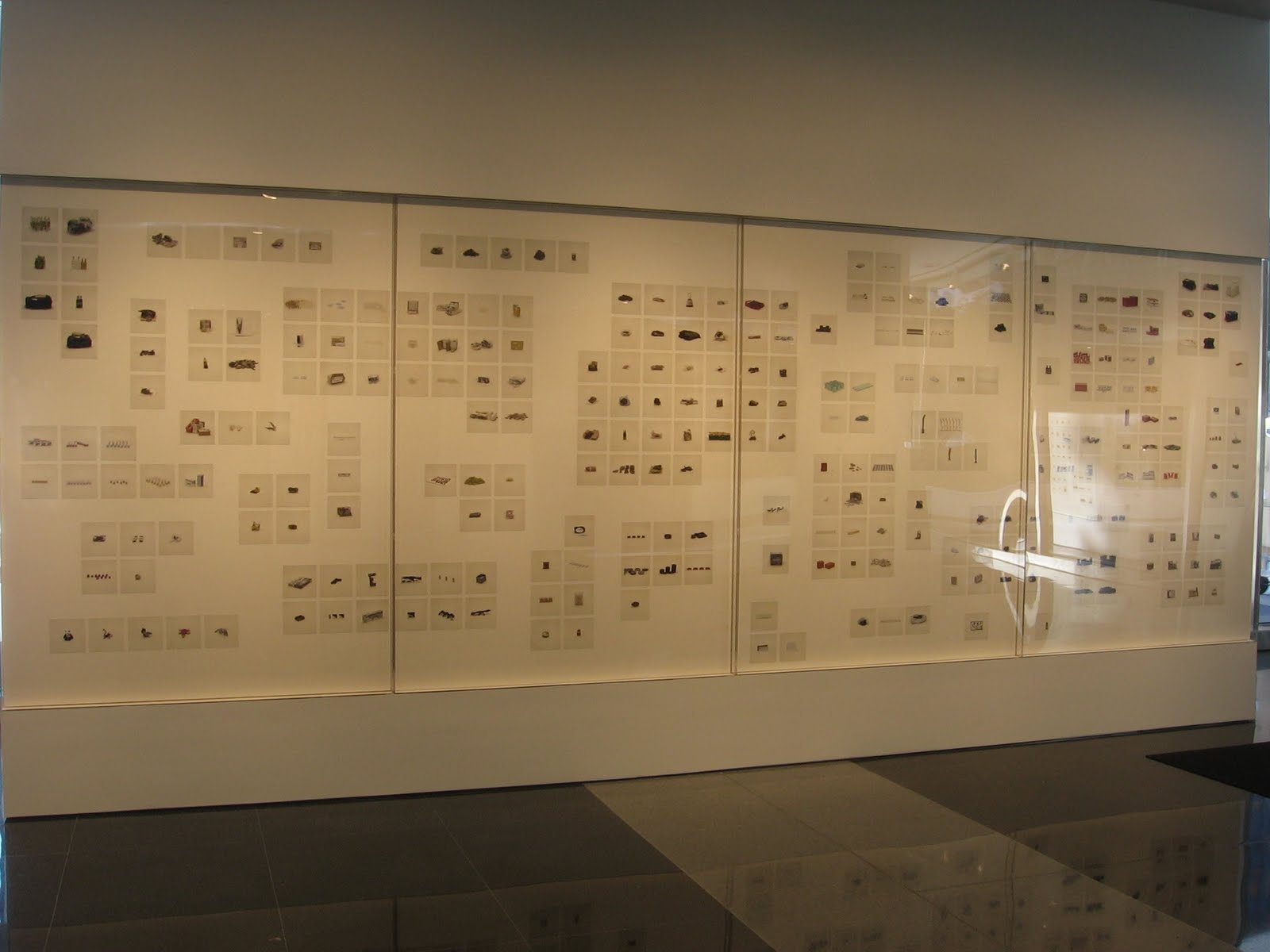 JTF (just the facts): A total of 1075 color photographs, mounted on archival paper, and hung in Plexiglas frames on three, two-sided walls in the single room lobby space. Each of the individual images is sized roughly 6×6. They are then grouped by subject matter onto 16 panels, each 95×71. All of the works were taken in 2009 and printed in 2010. A complete monograph of this project was recently published by Steidl (here). (Installation shots at right.)
JTF (just the facts): A total of 1075 color photographs, mounted on archival paper, and hung in Plexiglas frames on three, two-sided walls in the single room lobby space. Each of the individual images is sized roughly 6×6. They are then grouped by subject matter onto 16 panels, each 95×71. All of the works were taken in 2009 and printed in 2010. A complete monograph of this project was recently published by Steidl (here). (Installation shots at right.)
Comments/Context: Taryn Simon’s approach to photography mixes a deadpan documentary style with an undercurrent of cerebral, conceptual ideas that tests the limits of what a photograph can see and communicate. In previous projects, she has photographed people wrongly convicted of crimes at the scenes of their undoing, and made images of objects that have a hidden or indecipherable purpose. In her newest work, she spent five days in the bowels of JFK airport, taking pictures of all the items that were confiscated from passengers and express mail packages. The result is a taxonomy of contraband, a snapshot catalogue of all of the things that fall outside the approved and acceptable.

In this series, Simon’s images are basically commercial still
lifes: frontal shots of various objects set against neutral white backgrounds. This aesthetic approach depersonalizes the items, making them cold, pared down, documentary facts. Photographically, the images themselves aren’t particularly interesting.
But taken together, seen as an extremely long and eclectic list of things that are prohibited, illegal, counterfeit, unlicensed, or undeclared, the objects start to take on a different resonance. They start to create a picture of the edges of our culture, telling stories of the forbidden and illicit, of people who pursue activities that fall outside the norms. They paint a picture of a melting pot of puzzling cultural influences and traditions. They tell us about the global commerce that flows in and out of America like a flood each and every day, meeting our demands, fueled by our desires. They highlight what we find threatening or scary. In short, they provide a surprisingly direct social commentary on what we have decided we are not (and yet we still are).
.
So what’s on this exhaustive list? Deer blood, Cuban cigars, pirated DVDs, counterfeit Beanie Babies, peyote, moon cakes, pharmaceuticals of various kinds, leaves from endangered species, nesting dolls, bongs, skeletons, berries, chicken feet, sugar cane, unidentified meats, fake watches, seeds, eggshells, pirated handbags, bags of fat, and cigarettes, among many, many others. It’s a parade of oddities and curiosities, a set of both the bizarre and the mundane.
This is a show where the backstory is everything, where the context provides the spark of ideas. It’s a thoughtful conceptual exercise, bounded by a particular slice of time, and it successfully focuses the viewer on a striking inversion. It forces us to look closely at how we have defined our world by seeing what falls outside its boundaries.
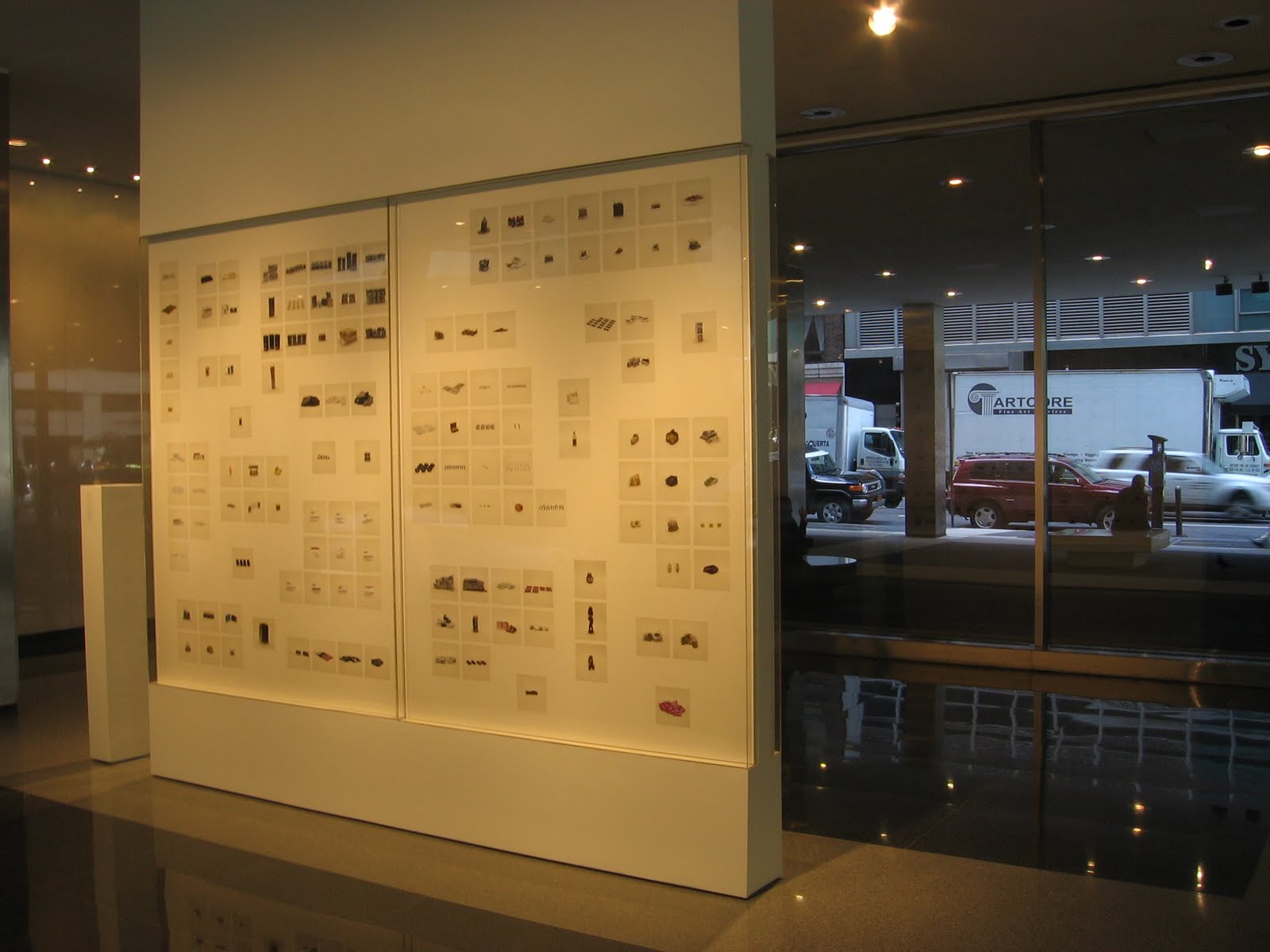 Collector’s POV:
Collector’s POV: Taryn Simon is represented by
Gagosian Gallery in New York (
here) and
Almine Rech Gallery in Paris and Brussels (
here). Simon’s work has only just begun to enter the secondary markets in the last year or so, and no definitive price pattern has yet emerged. As such, gallery retail is likely the only real option for interested collectors at this point.
Rating: * (one star) GOOD (rating system described
here)
Transit Hub:
- Artist site (here)
- Feature: NY Times Lens (here)
- Current exhibitions: Gagosian Beverly Hills (here) and Almine Rech Brussels (here)
Taryn Simon: Contraband
Through December 31st
390 Park Avenue
New York, NY 10022
 JTF (just the facts): A total of 16 color photographs, framed in white and matted, and hung in the main gallery space and back alcove. All of the works are hand colored gelatin silver prints, made between 1993 and 2010. Sizes range from roughly 15×10 (in editions of 10+2AP), to 20×29 (in editions of 5+1AP), and finally to 45×30 (in editions of 3+1AP). This is Nabil’s first solo show in New York. (Installation shots at right.)
JTF (just the facts): A total of 16 color photographs, framed in white and matted, and hung in the main gallery space and back alcove. All of the works are hand colored gelatin silver prints, made between 1993 and 2010. Sizes range from roughly 15×10 (in editions of 10+2AP), to 20×29 (in editions of 5+1AP), and finally to 45×30 (in editions of 3+1AP). This is Nabil’s first solo show in New York. (Installation shots at right.) The largest images in this show echo decades old Egyptian movie posters, where glamorous men and women lounge in exotic cinematic elegance. Women with marbled hair and red lips play cards and drink cocktails, a man in fez holds a rose, and a woman lies on the floor next to a ceramic cheetah. The scenes are both dreamily lethargic and highly charged. Amani by Window is a beguiling portrait of a young woman in a sparkling red wrap staged against a light blue background, and was my favorite image in the exhibit.
The largest images in this show echo decades old Egyptian movie posters, where glamorous men and women lounge in exotic cinematic elegance. Women with marbled hair and red lips play cards and drink cocktails, a man in fez holds a rose, and a woman lies on the floor next to a ceramic cheetah. The scenes are both dreamily lethargic and highly charged. Amani by Window is a beguiling portrait of a young woman in a sparkling red wrap staged against a light blue background, and was my favorite image in the exhibit. Collector’s POV: The works in this show are priced as follows. The smaller 15×10 prints start at $5400 and extend all the way up to $40400. The 20×29 and 45×30 prints are $32000 each. Nabil’s work as begun to enter the secondary markets in recent years, both in Photographs auctions as well as in sales of Contemporary Arab Art. Prices have ranged between roughly $5000 and $30000.
Collector’s POV: The works in this show are priced as follows. The smaller 15×10 prints start at $5400 and extend all the way up to $40400. The 20×29 and 45×30 prints are $32000 each. Nabil’s work as begun to enter the secondary markets in recent years, both in Photographs auctions as well as in sales of Contemporary Arab Art. Prices have ranged between roughly $5000 and $30000.

